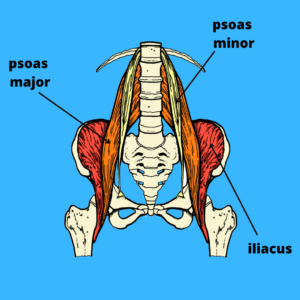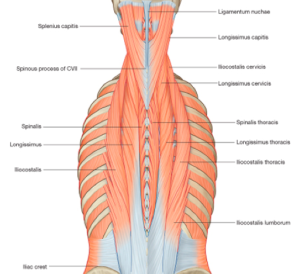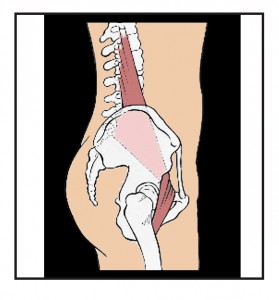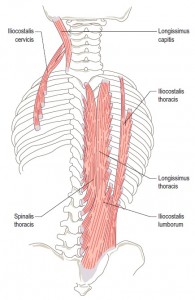The big pronouncement of today’s post is that it is hard to get out of lower back pain if the femurs, or leg bones, don’t sit directly under the pelvis (as in the middle image of the middle image above).
Making this bony alignment happen is the magic ingredient for the relief of lower back pain.
Lower back pain can happen for many reasons and sometimes there are structural problems that we have very little control over.
We can be born with, or inherit spinal issues, that occur before we are even aware of our own movements.
Other times accidents, injuries or even illness can create an environment that leads to pain and dysfunction.
But I have found that poor posture is the cause of a great deal of back pain.
Back pain is so common and so diverse in its origin and manifestation that its causes and effects can never really be lumped into one easy package but posture can cover a wide range of back problems.
Today we will look at my favorite muscle—the psoas—and how its poor alignment can render the erector spinae muscles, that are meant to extend our spine, useless.
 .
. 
The curve in our lower spine is what allows us to be upright and walk on two legs.
This curve, when functional, facilitates the transfer of weight from the head down to the pelvis and legs.
The curve in our lower spine, created by the psoas when we come to stand and walk upright on two legs, is needed for the erector spinae muscles to do their job and extend the spine upwards.
The erector muscles, as I wrote last week, work in a chain up and down the spine.
All links in the chain need to be aligned for the chain to work well.
The chain can only work well if the legs, pelvis and lower back are aligned so that the psoas when properly placed, allows access for the extension of the vertebral column. This happens when the femue bone sits directly under the center of the lumbar spine.
I have written about this in so many contexts but when the legs pelvis and lumbar spine are correctly situated the psoas can work like a pulley to allow for the full extension of the spine.
If the legs sink forward of the pelvis as they so often do, the psoas loses the tension created when is crosses the rim of the pelvis to align under the back half of the body.
If the psoas aligns correctly the lumbar vertebrae are pulled forward and down and they can find optimal length and spacing in a gentle curve which frees the erector spinae muscles to extend the spine as designed.
The end result is a more spacious lower back because the good alignment of the skeleton allow the muscles that are meant to extend the spine to do their job as planned.



